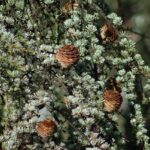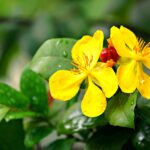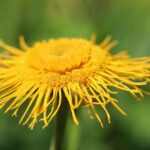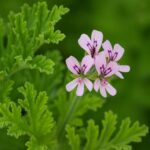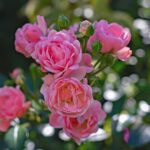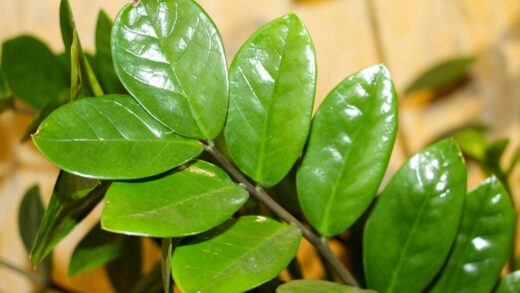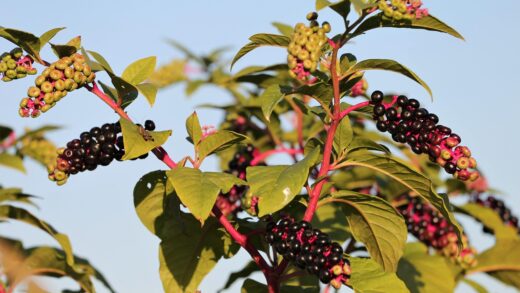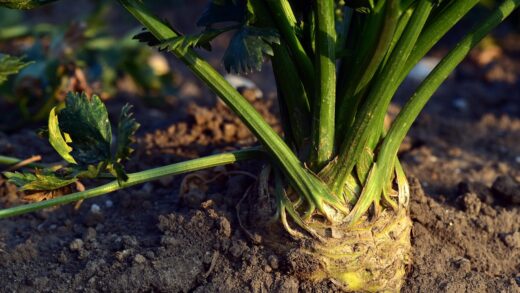To unlock the full flowering potential of the cape daisy and ensure its sustained vigor throughout the growing season, a well-managed fertilization program is absolutely essential. While these plants are not excessively heavy feeders, the continuous production of their numerous, vibrant blooms requires a steady supply of essential nutrients from the soil. Simply relying on the nutrients initially present in the garden soil or potting mix is often insufficient, as these resources become depleted over time. Implementing a thoughtful and consistent feeding regimen provides the plant with the necessary building blocks for robust foliage, strong stems, and, most importantly, a spectacular and long-lasting floral display. This professional guide will detail the specific nutrient needs of Osteospermum and outline the best practices for fertilizing them.
The nutritional needs of a cape daisy can be understood by looking at the three primary macronutrients, commonly represented by the N-P-K ratio found on fertilizer labels. These three numbers stand for Nitrogen (N), Phosphorus (P), and Potassium (K), each playing a distinct and vital role in the plant’s life cycle. Nitrogen is crucial for promoting healthy, green foliage and overall vegetative growth. Phosphorus plays a key role in root development, energy transfer, and, most critically for flowering plants, the formation of buds and blooms. Potassium contributes to the overall strength and vigor of the plant, improving its resistance to disease, drought, and temperature stress.
For cape daisies, a balanced fertilizer is generally the most effective choice for consistent performance throughout the season. A balanced formula is one that contains roughly equal proportions of the three macronutrients, such as a 10-10-10 or 20-20-20 blend. This type of fertilizer supports all aspects of the plant’s health, ensuring that lush foliage is balanced with strong root development and prolific flowering. Using a fertilizer that is excessively high in nitrogen can be counterproductive, as it may stimulate the plant to produce an abundance of leaves at the expense of flowers, resulting in a large green plant with very few blooms.
The physical form of the fertilizer you choose can also impact your feeding strategy. Fertilizers are generally available in two main types: granular and water-soluble (liquid). Granular fertilizers are slow-release formulas that are mixed into the soil at the time of planting or sprinkled around the base of the plant. They break down gradually over a period of weeks or months, providing a steady, low-level supply of nutrients. Water-soluble fertilizers, on the other hand, are mixed with water and applied during regular watering. They provide a quick boost of nutrients that are immediately available to the plant, making them ideal for regular feeding during the peak growing season.
It is crucial to understand that more fertilizer is not better. Over-fertilizing is a common mistake that can have severe consequences for your cape daisies. An excess of fertilizer salts can accumulate in the soil, which can “burn” and damage the plant’s delicate root system. This damage impairs the roots’ ability to absorb water and nutrients, leading to symptoms such as wilting, browning of leaf edges, and stunted growth. To avoid this, always adhere to the application rates and frequencies recommended on the fertilizer product’s packaging. If you are ever in doubt, it is always safer to err on the side of caution and apply the fertilizer at half the recommended strength.
More articles on this topic
Choosing the right fertilizer type
When selecting a fertilizer for your cape daisies, the choice between a water-soluble and a granular formula often comes down to your gardening style and the specific needs of your plants. Water-soluble fertilizers, which are dissolved in water before application, are an excellent choice for providing immediate and easily absorbed nutrition. This makes them particularly well-suited for container-grown plants, where nutrients are leached out of the limited soil volume with each watering. Applying a liquid feed every two to four weeks during the growing season gives you precise control over the nutrient supply and can quickly correct any signs of deficiency.
Granular fertilizers offer the benefit of convenience through their slow-release action. These products are formulated with coatings that dissolve at different rates, releasing their nutrients into the soil over an extended period, often lasting from one to three months. This “feed it and forget it” approach can be ideal for plants in garden beds, reducing the frequency of applications needed. When incorporating a slow-release granular fertilizer into the soil at planting time, you provide your cape daisies with a foundational level of nutrition that will support their initial establishment and growth.
In addition to synthetic fertilizers, organic options can also be highly effective for nourishing your cape daisies. Materials like compost, well-rotted manure, and fish emulsion provide a natural, slow-release source of a wide range of macronutrients and micronutrients. Amending your soil with compost at the time of planting is one of the best things you can do to improve its fertility and structure. Throughout the growing season, you can “top-dress” the soil around your plants with a fresh layer of compost or apply a diluted organic liquid feed, like fish emulsion or compost tea, to provide a gentle and continuous supply of nutrients.
Ultimately, a combination approach can often yield the best results. You can start by incorporating a balanced, slow-release granular fertilizer or a generous amount of compost into the soil at planting time. This will provide a long-lasting baseline of nutrition. Then, throughout the peak blooming season, you can supplement this with a regular application of a water-soluble fertilizer every few weeks. This strategy ensures the plants have both a consistent background supply of nutrients and the immediate boost needed to support heavy flowering, especially for those in containers.
More articles on this topic
A seasonal fertilization schedule
The nutritional needs of your cape daisies will vary with the seasons, and your fertilization schedule should be adjusted accordingly to match their growth cycle. In the early spring, as the plants are beginning their period of active growth, they require a good supply of nutrients to develop strong roots and healthy foliage. This is the ideal time to incorporate a slow-release granular fertilizer into the soil around the plants or to begin a regular feeding regimen with a balanced liquid fertilizer. An initial application after the last frost will provide the fuel needed for a strong start to the season.
During the peak growing and blooming period of late spring and early summer, your cape daisies will be at their most demanding. The constant production of new flowers requires a significant amount of energy and nutrients. To support this, you should feed your plants regularly, typically every two to three weeks for container plants and every three to four weeks for garden-planted specimens, using a balanced, water-soluble fertilizer. This consistent supply of readily available nutrients will ensure the plants have the resources they need to maintain their prolific floral display.
As the intense heat of midsummer arrives, many varieties of Osteospermum may naturally slow down their growth and enter a semi-dormant state to conserve energy. During this period, their nutrient requirements are reduced. It is advisable to decrease the frequency of fertilization to once a month or even pause it altogether if the plants have completely stopped flowering. Continuing to fertilize heavily when the plant is not actively growing can lead to a buildup of fertilizer salts in the soil, which can damage the roots.
When the temperatures begin to cool in late summer and early autumn, your cape daisies will often experience a resurgence of growth and a second flush of blooms. This is the time to resume your regular fertilization schedule to support this renewed flowering effort. Continue to feed them with a balanced liquid fertilizer every few weeks until the plant’s growth slows down significantly with the onset of colder weather. Once you approach the first expected frost date, you should cease all fertilization to allow the plant to prepare for dormancy or the end of its annual cycle.
Recognizing nutrient deficiencies
Learning to identify the visual signs of nutrient deficiencies can help you diagnose and correct nutritional problems before they severely impact the health of your cape daisies. One of the most common signs is chlorosis, or the yellowing of leaves. The specific pattern of yellowing can often indicate which nutrient is lacking. A general yellowing of the older, lower leaves on the plant typically points to a nitrogen deficiency. Since nitrogen is a mobile nutrient, the plant will move it from its older leaves to support new growth, causing the old leaves to turn yellow and eventually drop off.
If you observe yellowing that occurs primarily between the veins of the younger, newer leaves, while the veins themselves remain green, this is a classic symptom of an iron deficiency. This condition, known as interveinal chlorosis, occurs because iron is an immobile nutrient, meaning the plant cannot move it from old tissues to new ones. This type of deficiency is often caused not by a lack of iron in the soil, but by a soil pH that is too high (alkaline), which makes the existing iron unavailable for the plant to absorb. Correcting the soil pH or applying a chelated iron supplement can resolve this issue.
A phosphorus deficiency can be more subtle and difficult to diagnose. It often manifests as stunted growth and foliage that takes on a dull, dark green or even purplish hue. Flowering will also be significantly reduced, as phosphorus is essential for bud formation. While a phosphorus deficiency is less common than a nitrogen deficiency, it can occur, especially in cold, compacted, or overly acidic soils. Using a balanced fertilizer that contains an adequate amount of phosphorus is typically sufficient to prevent this problem.
A lack of potassium can lead to a general weakening of the plant, making it more susceptible to diseases and stress. The most common visual symptom of a potassium deficiency is the yellowing or browning of the leaf margins, or edges, starting with the older, lower leaves. The stems may also become weak and floppy. Ensuring your fertilization program includes a balanced fertilizer with sufficient potassium will help maintain the plant’s overall structural integrity and resilience.
Best practices for application
To ensure that your cape daisies receive the maximum benefit from fertilization without any adverse effects, it is important to follow a few best practices for application. First and foremost, you should always water the soil thoroughly before applying any type of fertilizer, especially water-soluble formulas. Applying fertilizer to dry soil can concentrate the fertilizer salts around the roots and cause severe chemical burn. Watering first ensures that the roots are hydrated and that the fertilizer will be distributed more evenly throughout the root zone.
When using a water-soluble fertilizer, always mix it according to the manufacturer’s directions, or even slightly more diluted. Never apply a more concentrated mixture in an attempt to feed the plants more heavily, as this is a common cause of fertilizer burn. Apply the diluted fertilizer solution to the soil at the base of the plant, just as you would during a normal watering. Ensure you apply enough of the solution to moisten the entire root zone. Avoid pouring the fertilizer solution directly over the leaves and flowers to prevent potential foliage burn.
For granular fertilizers, the application method is equally important. When incorporating it at planting time, mix the granules evenly into the soil of the planting hole and the backfill soil. If you are top-dressing an established plant, carefully sprinkle the recommended amount of granules evenly on the soil surface around the base of the plant, being careful to keep the granules off the plant’s stem and leaves. After applying the granules, gently work them into the top inch or so of soil and then water the area well. This watering helps to activate the fertilizer and begin the process of releasing the nutrients into the soil.
Finally, it is beneficial to periodically flush the soil of container-grown plants to prevent the buildup of excess fertilizer salts. This can be done once every month or two. To flush the pot, simply water it thoroughly with plain water, allowing the water to run freely through the drainage holes for several minutes. This process leaches out any accumulated salts from the potting mix, creating a healthier environment for the roots. This simple step can prevent many of the problems associated with long-term container gardening and frequent fertilization.







